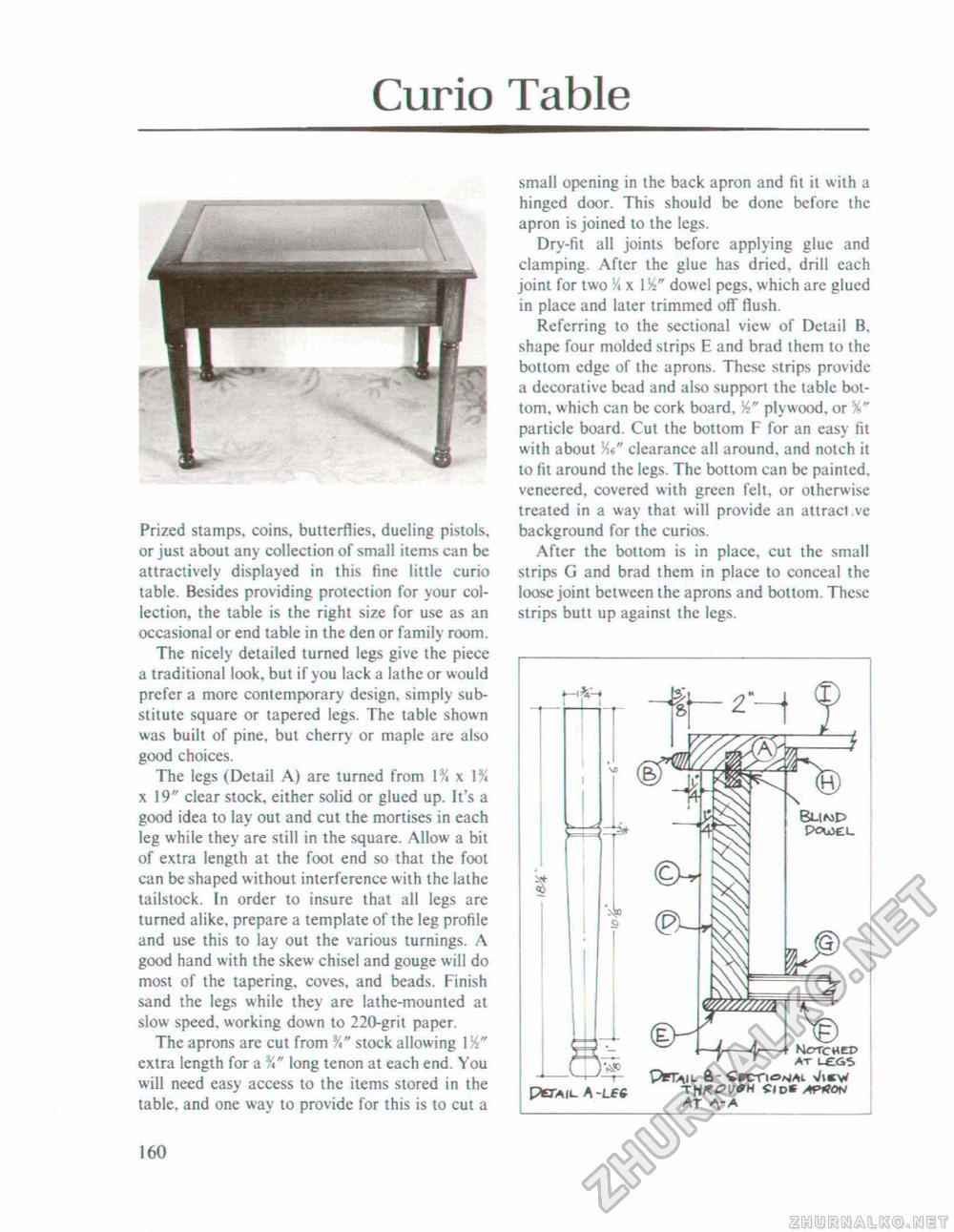Woodworker's Journal 101-Projects-for-Woodworkers, страница 167
Curio TablePrized stamps, coins, butterflies, dueling pistols, or just about any collection of small items can be attractively displayed in this fine little curio table. Besides providing protection for your collection, the table is the right size for use as an occasional or end table in the den or family room. The nicely detailed turned legs give the piece a traditional look, but if you lack a lathe or would prefer a more contemporary design, simply substitute square or tapered legs. The table shown was built of pine, but cherry or maple are also good choices. The legs (Detail A) are turned from 1% x x 19" clear stock, either solid or glued up. it's a good idea to lay out and cut the mortises in each leg while they are still in the square. Allow a bit of extra length at the foot end so that the foot can be shaped without interference with the lathe tailstock. In order to insure that all legs are turned alike, prepare a template of the leg profile and use this to lay out the various turnings. A good hand with the skew chisel and gouge will do most of the tapering, coves, and beads. Finish sand the legs while they are lathe-mounted at slow speed, working down to 220-grit paper. The aprons are cut from stock allowing extra length for a %" long tenon at each end. You will need easy access to the items stored in the table, and one way to provide for this is to cut a 160 small opening in the back apron and fit it with a hinged door. This should be done before the apron is joined to the legs. Drv-fit all joints before applying glue and clamping. After the glue has dried, drill each joint for two K x 1 dowel pegs, which are glued in place and later trimmed off flush. Referring to the sectional view of Detail B, shape four molded strips E and brad them to the bottom edge of the aprons. These strips provide a decorative bead and also support the table bottom, which can be cork board, !4" plywood, or particle board. Cut the bottom F for an easy fit with about clearance all around, and notch it to fit around the legs. The bottom can be painted, veneered, covered with green felt, or otherwise treated in a way that will provide an attraci ve background for the curios. After the bottom is in place, cut the small strips G and brad them in place to conceal the loose joint between the aprons and bottom. These strips butt up against the legs. Notcmep at at a-a |








